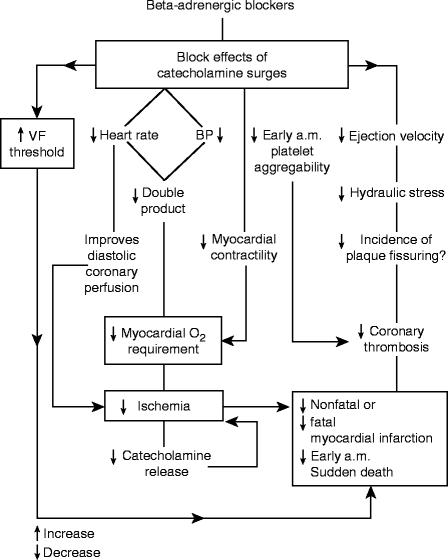These beta-blockers have lately been suspected to increase peripheral vascular resistance and attenuate the decreases in heart rate and cardiac output that may negate any benefit in a cardiovascular disease population 29. Beta-Blockers Intrinsic Sympathomimetic Agents such as acebutolol and pindolol possess intrinsic sympathomimetic activity ISA.

How To Remember Beta Blocker Classification In 5 Minutes Youtube
Bisoprolol Metoprolol succinate and Carvedilol are used there due to lipophilicity and lack of ISA.

Beta blocker activity list isa. Acebutolol Sectral Carteolol Ocupress Penbutolol Levatol Pindolol Visken. However an in vitro study looking at 16 β-blockers revealed that 7 compounds were weak agonists at stimulating cAMP via the β 2 -adrenoceptor alprenolol acebutolol atenolol labetalol oxprenolol pindolol practolol Wisler et al 2007. Produce partial sympathetic activity while inhibiting the normal and activated sympathetic activity Effects Cause less.
Beta blockers with ISA have smaller effects on heart rate than agents that do not have ISA. Amongst the few beta blockers drugs which exhibit prominent intrinsic sympathomimetic activity pindolol is primarily used as an anti-hypertensive. Beta-blockers with Membranse stabilizing activity MSANa blocking action Local anestheticAnti-arrhythmic activity.
This confers a local anaesthetic and anti-arrhythmic effect eg. Beta-blockers with partial agonist activity include pindolol. Those Cardioselective beta blockers with intrinsic sympathomimetic activity ISA include celiprolol acebutolol and xamoterol.
Some beta blockers for example pindolol Visken have intrinsic sympathomimetic activity ISA which means they mimic the effects of epinephrine and norepinephrine and can cause an increase in blood pressure and heart rate. Labetalol has intrinsic sympathomimetic activity and additional α 1-blocking activity Nadolol. Beta blockers that also block alpha blockers include.
Are principally found in the myocardium. Another criterion that distinguishes a smaller group is the presence of intrinsic sympathomimetic activity ISA. Another advantage of using this drug is that the rebound hypertension symptoms on withdrawal are less.
However beta-selective agents may offer some advantages over conventional beta blockers in hypertensive patients with concurrent conditions such as chronic obstructive airways disease peripheral vascular disease. Cardioselective beta blockers without intrinsic sympathomimetic activity ISA include atenolol metoprolol bisoprolol and practolol. Beta blockers with Intrinsic sympathomimetic activity ISA or parital agonists.
These agents can be used alone or in combination with other. Similarly beta blockers with and without intrinsic sympathomimetic activity ISA have comparable antihypertensive effects. In respect to this which beta blocker has intrinsic sympathomimetic activity.
Beta blockers such as pindolol Visken penbutolol sulfate Levatol and acebutolol hydrochloride Sectral differ from other beta blockers as they possess intrinsic sympathomimetic activity ISA which means they mimic the effects of epinephrine and norepinephrine and can cause an. It is especially given to patients who develop marked bradycardia on prolonged use of propranolol. The ones with ISA seem to be used pretty infrequently in younger populations or more active people less tolerant of a low heart rate from a full beta blocker.
A new class of beta-adrenergic blockers with the pharmacologic property of intrinsic sympathomimetic activity ISA is emerging for use in the treatment of hypertension. Beta blockers with intrinsic sympathomimetic activity ISA act as partial adrenergic agonists. Beta-blockers with intrinsic sympathomimetic activity ISA are drugs used to lower blood pressure and maintain heart rate.
Beta-blockade occurs when adrenergic activity is increased eg. Carvedilol Coreg Coreg CR Labetalol Trandate. There is no evidence that these drugs have important advantages over other beta-blockers in the treatment of hypertension.
Buci Celi took Cart Pen Pin to Ace Lab. These agents decrease blood pressure and systemic vascular resistance while the heart rate and cardiac output at rest are maintained. Oxprenolol has intrinsic sympathomimetic activity Penbutolol has intrinsic sympathomimetic activity Pindolol has intrinsic sympathomimetic activity Sotalol not considered a typical beta blocker Timolol.
Activity Beta blockers with ISA bind to and stimulate the β-adrenergic receptor agonistic effect while competitively inhibiting the binding of epinephrine and norepinephrine to β-adrenergic receptors antagonistic effect. Some beta-blockers also block effects mediated at peripheral. Beta blockers with intrinsic sympathomimetic activity ISA include.
Non-cardioselective beta blockers also inhibit β2 receptor sites which are found in smooth muscle in the lungs blood vessels and other organs. And the significant benefits from beta-blockers in reducing cardiovascular end-points result from beta1-blockade1 Since intrinsic sympathomimetic activity ISA detracts from efficacy beta-blockers with ISA. Labetalol hydrochloride celiprolol hydrochloride carvedilol and nebivolol are beta-blockers that have in addition an arteriolar vasodilating action by diverse mechanisms and thus lower peripheral resistance.
Beta blockers that are non-selective do not have ISA and do not block alpha receptors include. Their predominant mechanism of action ie the inhibition of the stimulation of sympathetic beta-adrenoceptors by adrenaline and noradrenaline is well known all around. Beta-blockers with ISA stimulate the beta-adrenergic receptors and oppose the action of epinephrine released.
The prototype β-blocker with ISA is pindolol. Beta blockers such as pindolol Visken penbutolol sulfate Levatol and acebutolol hydrochloride Sectral differ from other beta blockers as they possess intrinsic sympathomimetic activity ISA which means they mimic the effects of epinephrine and norepinephrine and can cause an increase in blood pressure and heart rate. Celiprolol and pindolol have intrinsic sympathomimetic activity ISA and therefore simultaneously block and stimulate beta-adrenoceptors causing less bradycardia and peripheral vasoconstriction5 This may be desirable in patients with peripheral artery disease but less beneficial in patients with heart failure or angina.

Komentar